Last-Minute NYC Holiday Gift Guide 🎁
We’ve created a holiday gift guide with presents for the intrepid New Yorker that should arrive just in time—


Today is the last day to check out the 42nd Street S shuttle between Times Square and Grand Central before major renovation begins to radically transform the crosstown transit connection. Yesterday, we caught one or two other transit nerds like us plus MTA photographers capturing the two terminuses for posterity. The 42nd Street shuttle is one of those curious remnants of earlier subway lines, adapted and re-adapted multiple times over the years. The latest renovation will add to this patchwork history, but aims to more accessible, with increased capacity, and easier to use.
The New York City subway system used to be made of private lines like the Interborough Rapid Transit (IRT) and the Brooklyn Rapid Transit (BRT, later the BMT). As we showed in this vintage video of the first subway line, it ran up Park Avenue, crossed Manhattan at 42nd Street and then went up Broadway.
 1962 Shuttle platform in Grand Central. Photo courtesy NY Transit Museum.
1962 Shuttle platform in Grand Central. Photo courtesy NY Transit Museum.
In 1913, the Public Service Commission created an initiative called the Dual System of Rapid Transit which required the IRT and BRT to operate portions of the new system. To fill in a 400 foot gap between the old system and the new at 42nd Street, a new subway station was built adjacent to Grand Central. According to Brennan of Abandoned Stations, “trackways were built continuing east under 42 St, to bring those two tracks into the new station (at Grand Central), which was a narrow island platform between the two tracks. It was expected that two tracks would be more than adequate for the shuttle.” The former IRT express track was turned into a platform, which is why there is no Track 2 today.
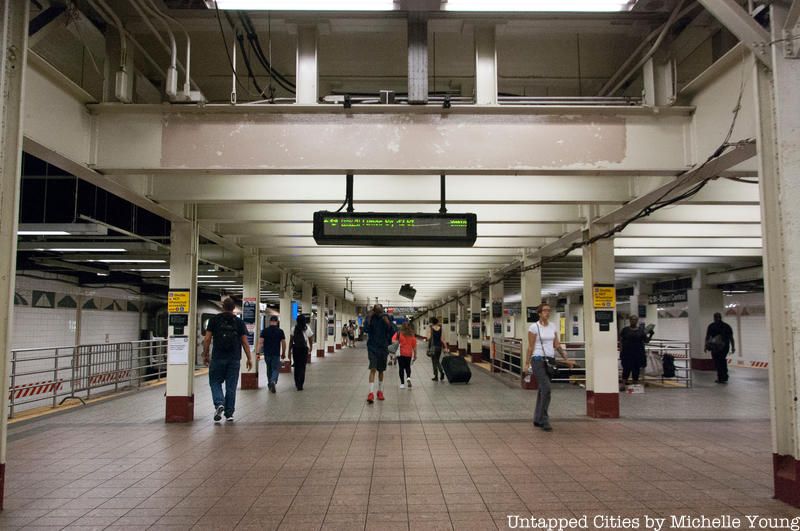
The former IRT express track (Track 2) is the main platform at both Grand Central (above) and Times Square
Originally, the mezzanine level passageway was intended as the main corridor between Grand Central and the Shuttle. However, demand for the Shuttle was far larger than expected and during a temporary closure, officials hastily covered up the tracks as a walkway between the Shuttle and Grand Central which is still in use today. The shuttle also re-opened with three subway tracks. Now, over 100,000 people use the shuttle line daily and during peak hours, ridership can reach up to 10,000 per hour.

1947 Shuttle Platform in Times Square. Photo courtesy NY Transit Museum.
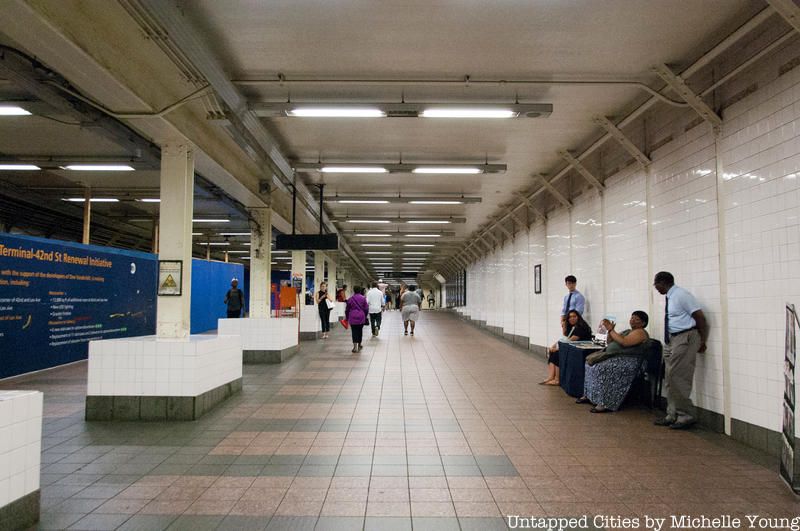
The main corridor between Grand Central and the S shuttle platforms, which used to be train tracks
The hastiness back in the early 20th century continued to have repercussions for over a century. For example, at Grand Central, you can see the columns that were intended be on the platforms of the extended station that were never finished. A new office built for the Rapid Transit Operations (RTO)’s Cold Weather Reporting Station and other temporary structures have further concealed remnants of this old subway platform and track.

The columns intended to be on the platforms of the station that was never extended, photograph from 2014. Today, most of these columns are concealed by temporary structures.
At Times Square, flows of transit-goers have to wait for the signal indicating where the next train is arriving, usually causing large movements at the last minute. And despite renovations to Times Square over the years, it was clear from the abrupt change in flooring and level of the floors, that renovations to the Shuttle were going to be handled at a later time. As the MTA admits, “this critical link in Midtown Manhattan is difficult to navigate and isn’t accessible to mobility impaired customers due to three main issues that exist: large gaps between platforms and track, columns impeding the platform and train boarding from multiple separate platforms.”
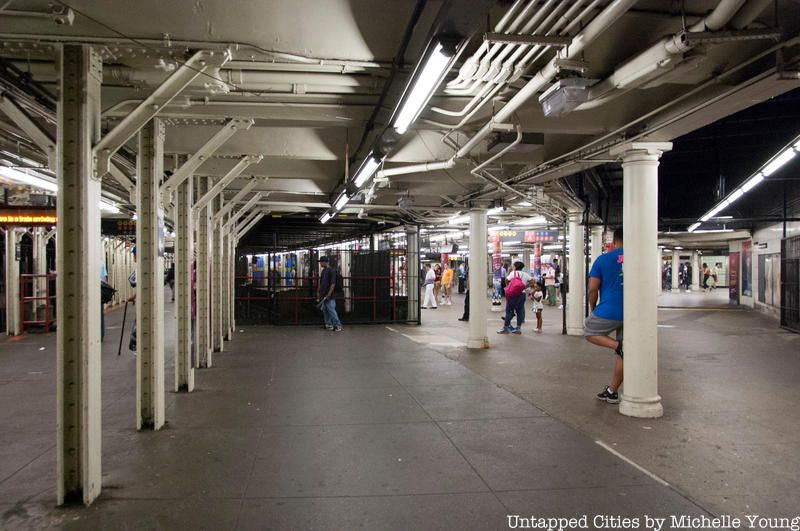
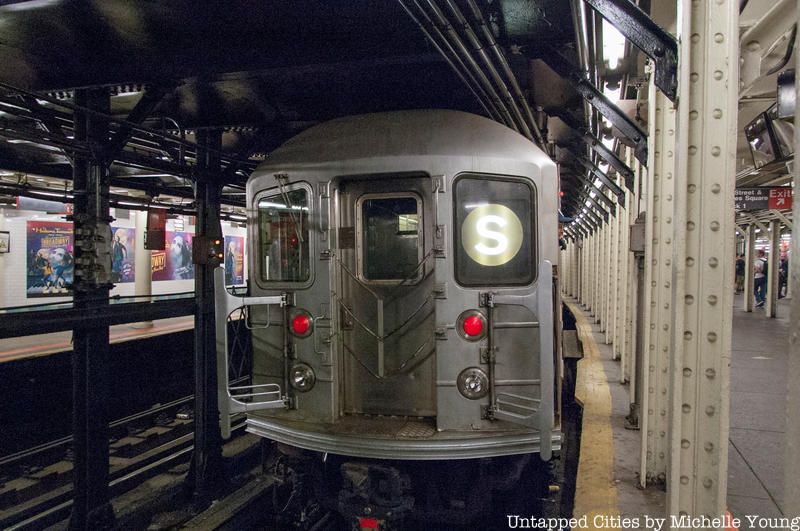
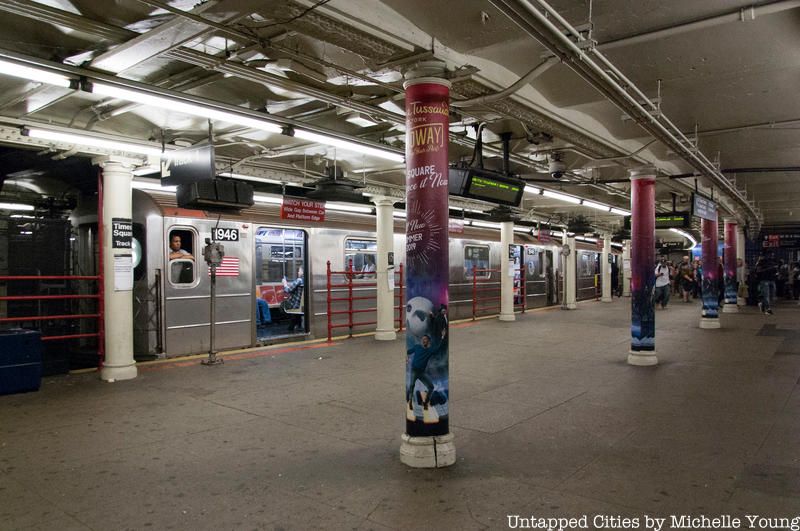
Of the major changes coming: there will be only two tracks when the construction is done, to reduce confusion, but the trains will be extended from four cars to six. The MTA says this will increase peak capacity by 20%. The curved tracks will be straightened to make the platforms ADA compliant and new entrances will be constructed. And the signal system will be updated, moving it off the 1930s system.
At Times Square specifically, there will be a single, centralized platform that will be twice as wide as the current and will contain far fewer columns. There will be a new station entrance with elevator, glass canopy and 15-foot wide staircase, and station upgrades throughout the area. At Grand Central, a centralized 22,000 square foot platform will make it one of the largest platforms in all of the New York City subway system. A larger staircase will be built leading up to the mezzanine to improve flow.
To minimize disruption for transitgoers, the construction work will be done in phases and take advantage of Track 4 which is rarely used. So far, the former Knickerbocker Hotel subway entrance is still intact and hasn’t been covered by any construction work — we hope it stays intact in the renovation.
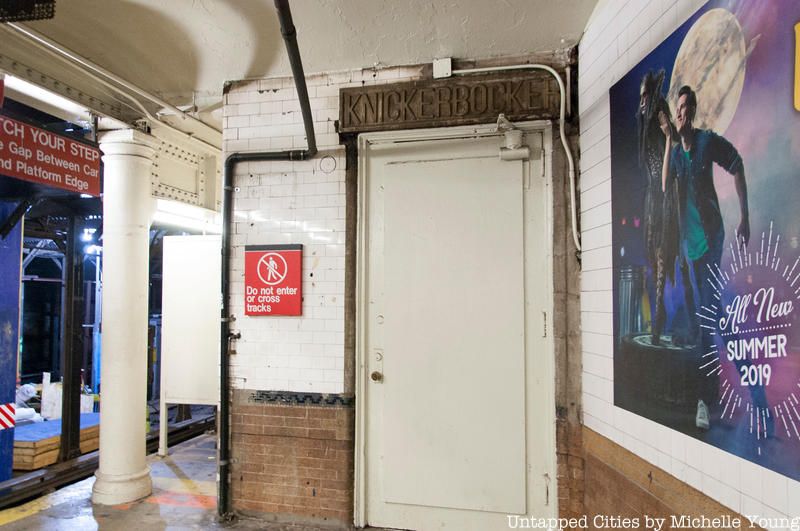
Scroll down to see more photos of the shuttle stations as they are now:
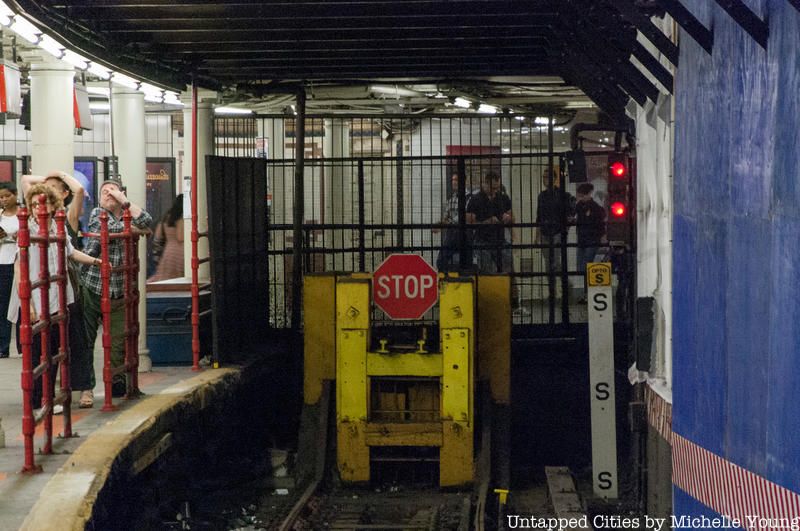
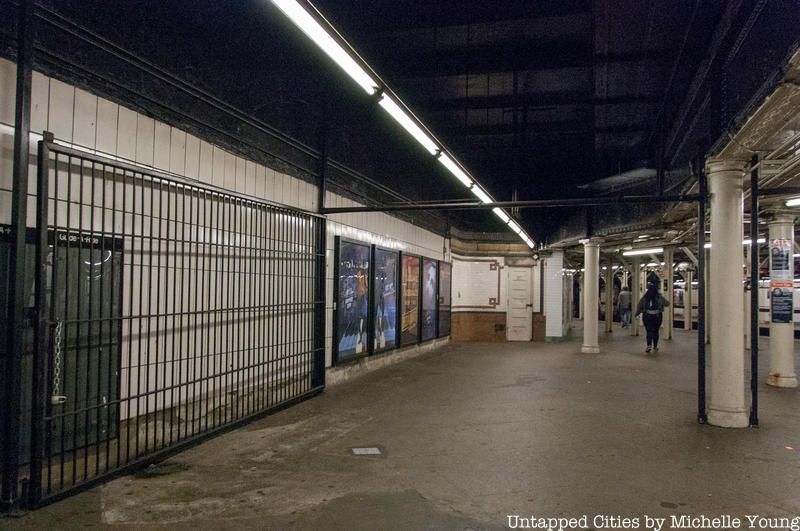
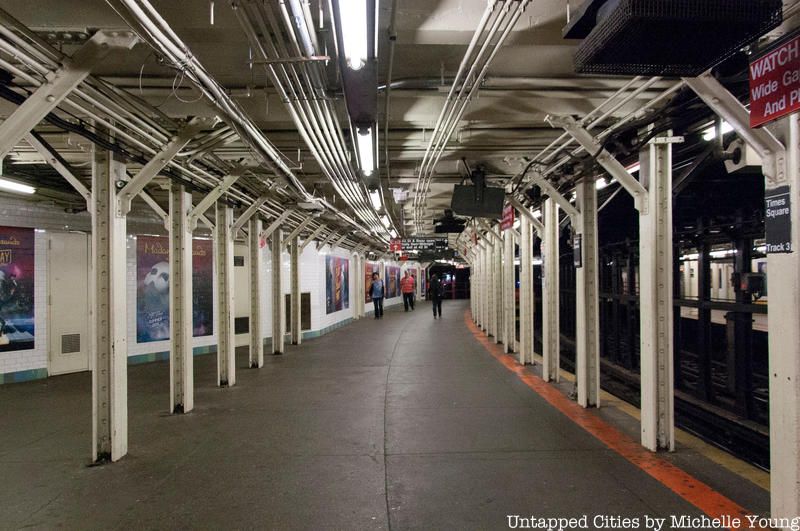
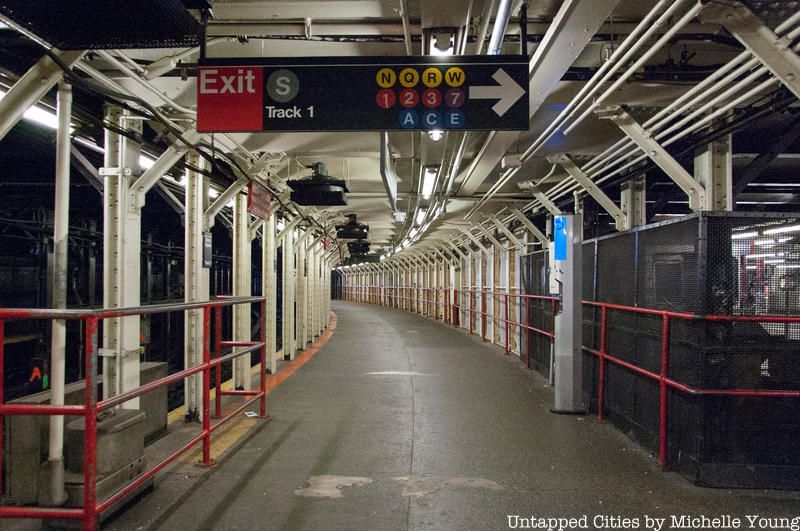
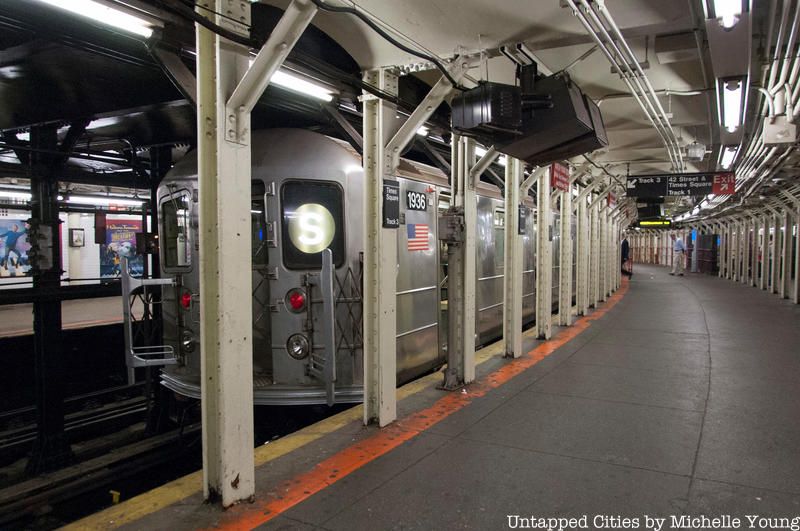
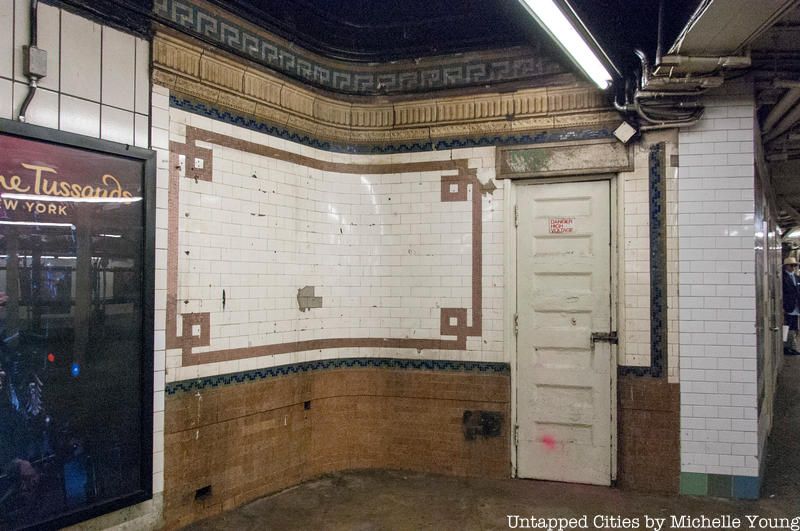
One portion of tiling that still remains
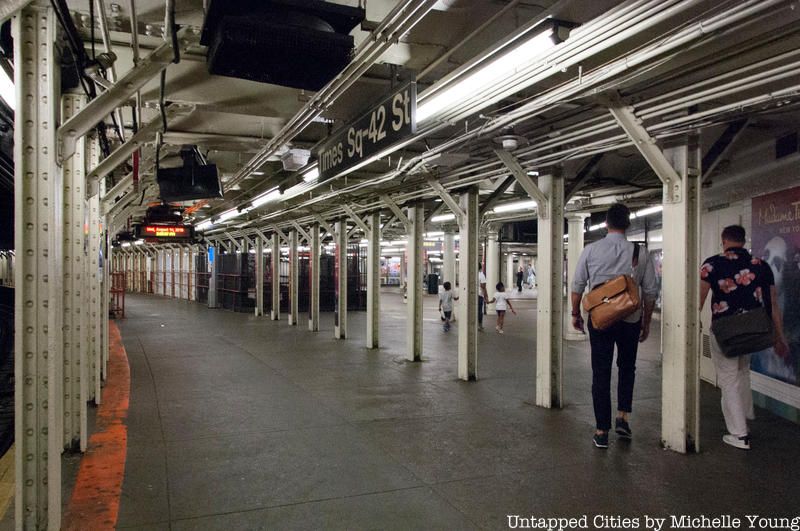
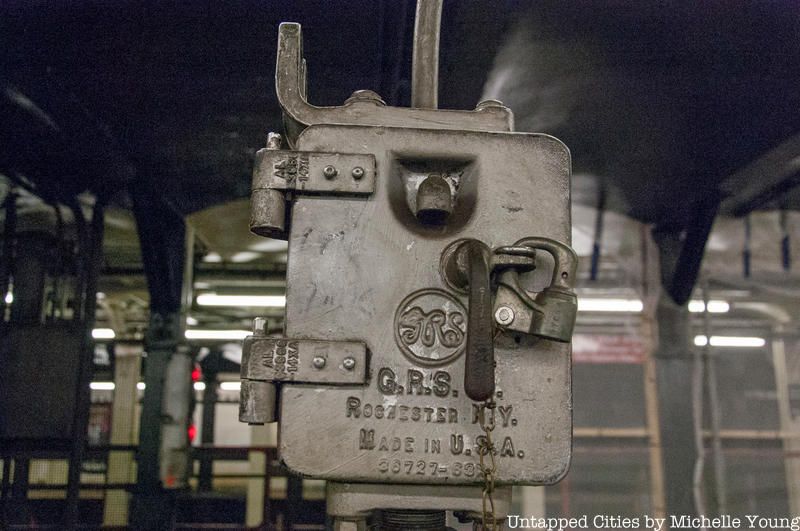
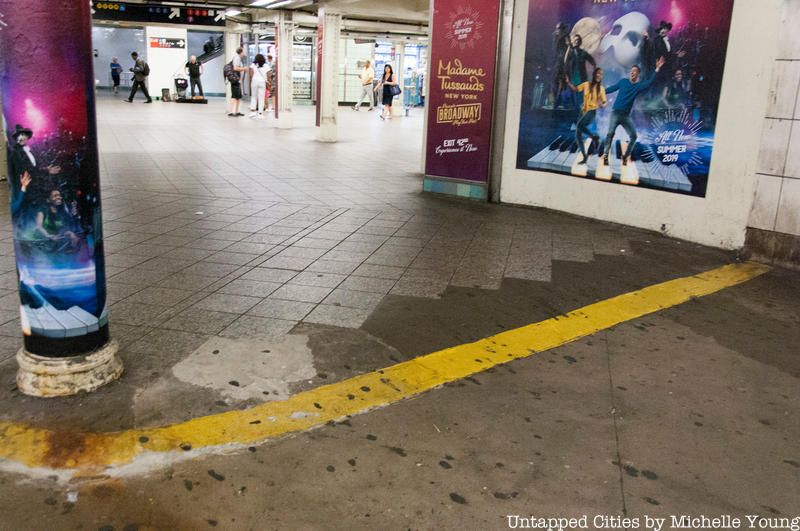
The floor change that signifies the shift between the renovated Times Square station and the shuttle area
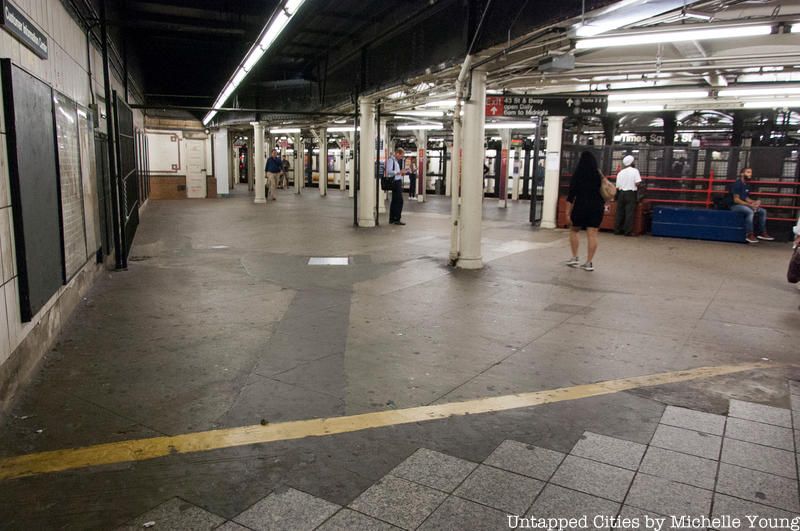
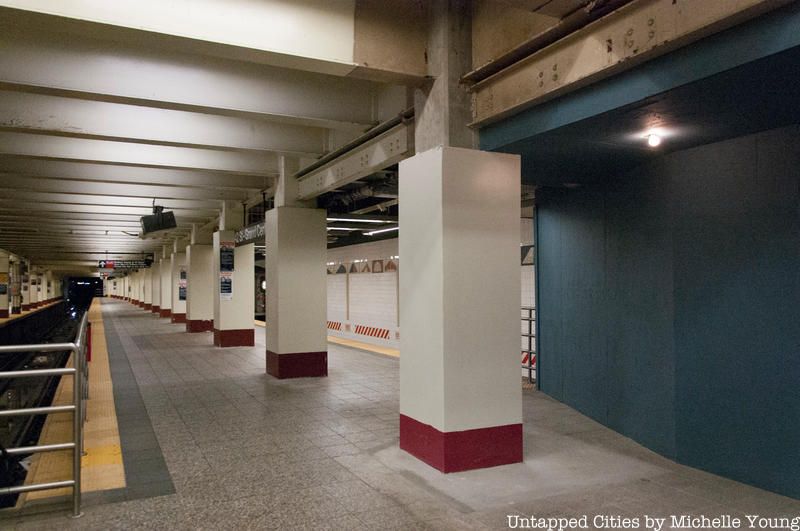
Grand Central shuttle terminus
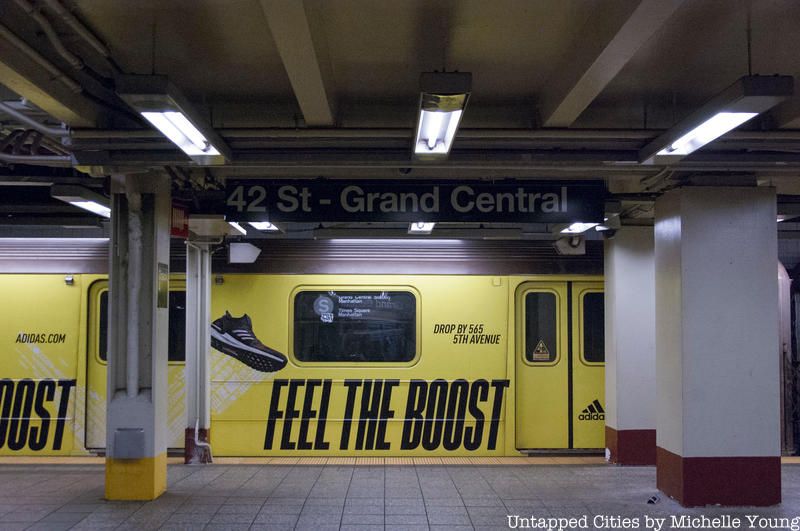
Join us on an upcoming Underground Tour of the NYC Subway:
Subscribe to our newsletter